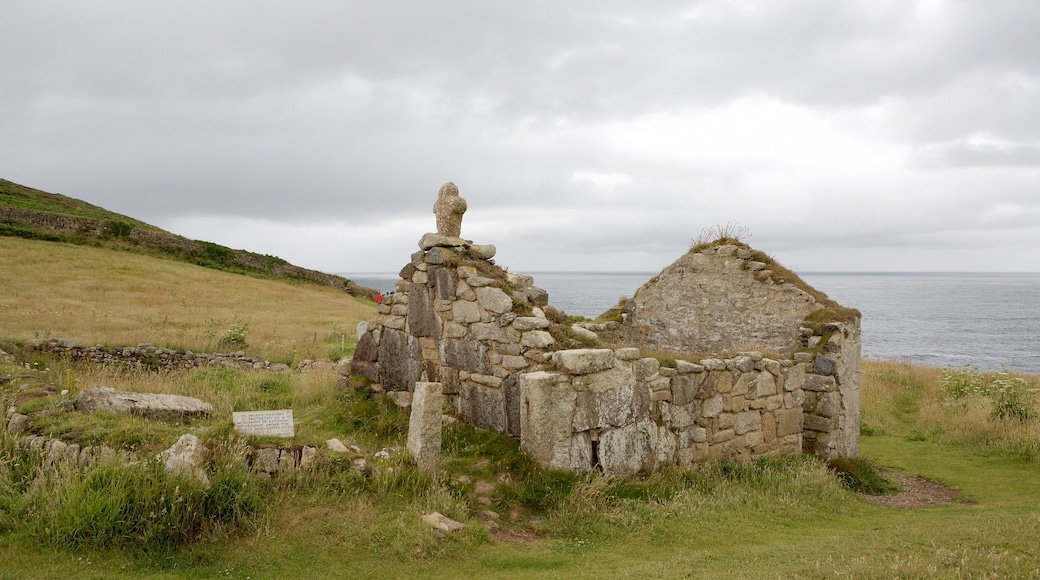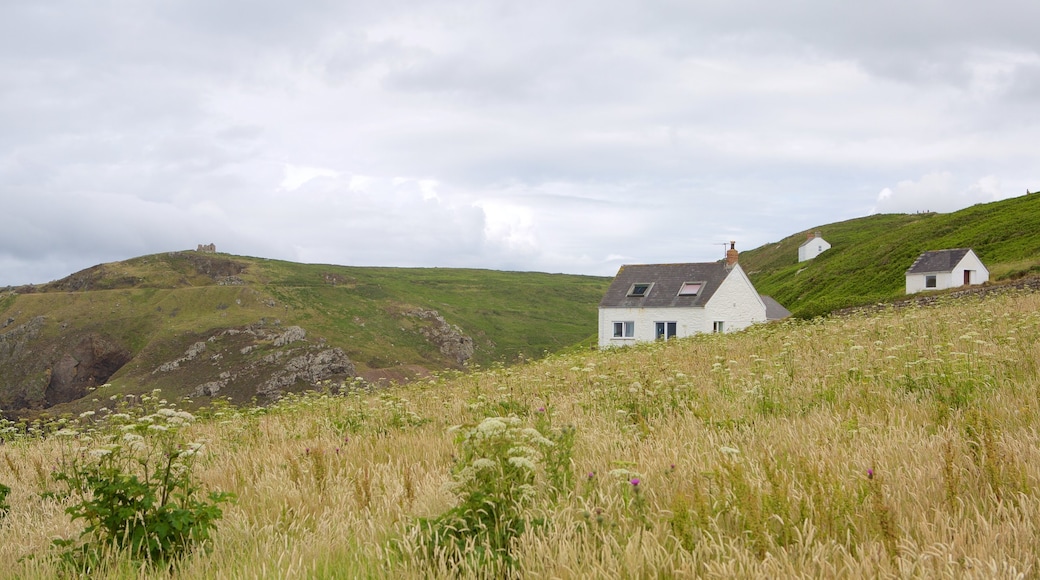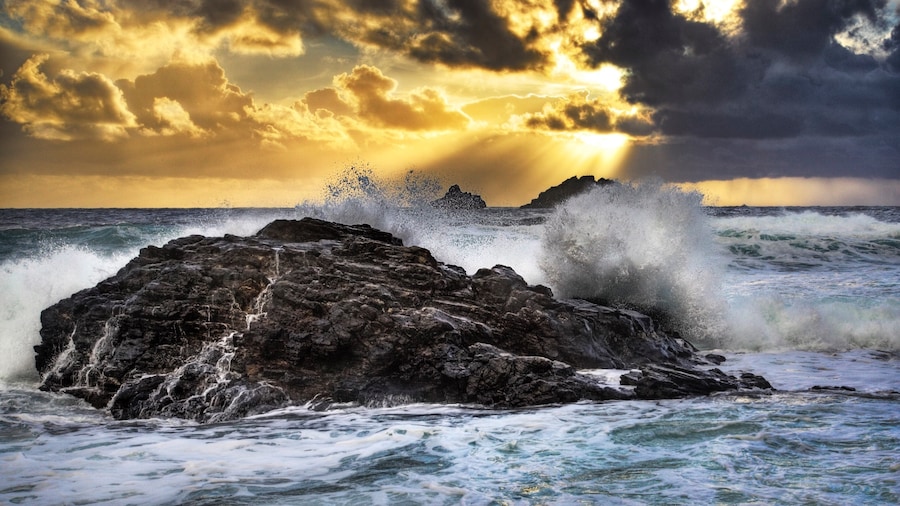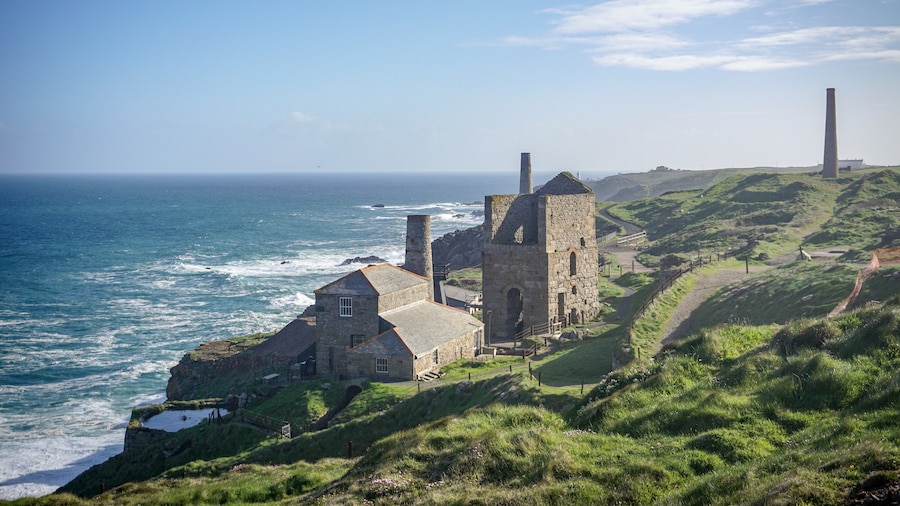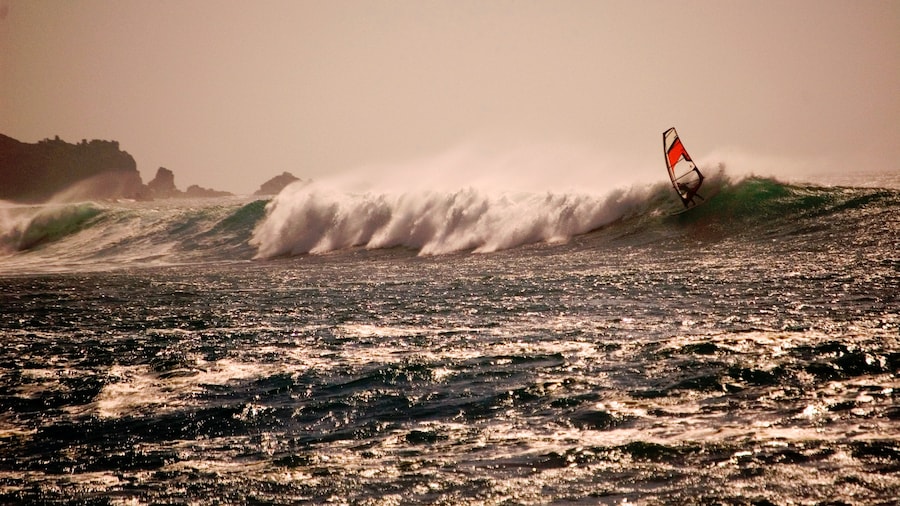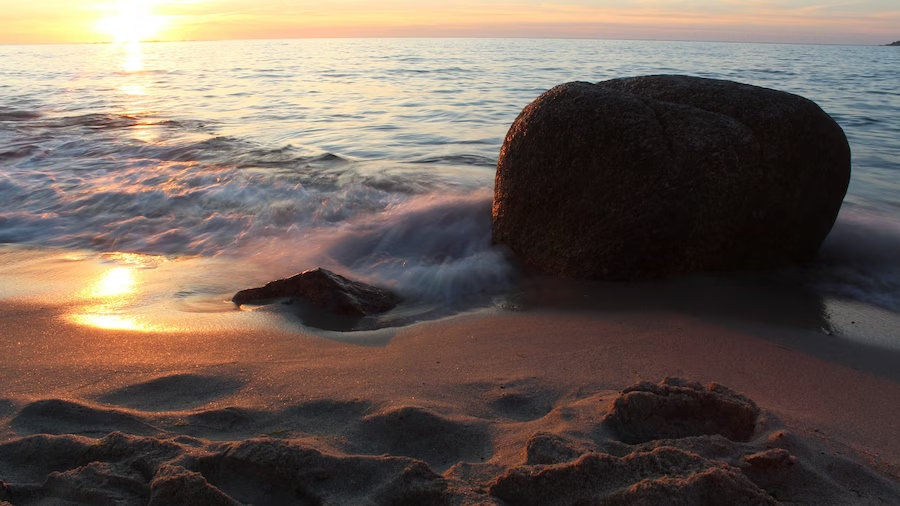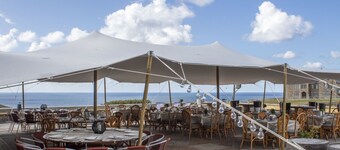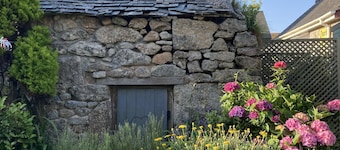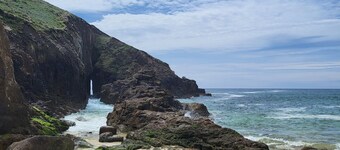Find remnants from an old industrial age scattered along the coastal nature paths of this scenic patch of headland.
Cape Cornwall is a small, rugged headland with myriad trails and views of the foaming Atlantic Ocean. Once an important tin mining region, the cape still contains industrial relics from the era that form part of the UNESCO-listed Cornwall and West Devon Mining Landscapes. Follow the various trails that lead through coastal heathland and to mining museums.
Learn about the early history of the cape, which was known in Cornish as Kilgodh Ust, meaning goose-back at St. Just. This name is a reference to the shape of the headland.
Embark on the circular St. Just Coastal Walk, which takes around 2 hours to complete. The walk offers spectacular views of the turbulent ocean and on most days, solitude. Walkers can see the rocky islet of Brisons, which has twin peaks that lie offshore from the cape. On a clear day, hikers may even be able to see the Isles of Scilly in the background. Bring binoculars to look for the Cornish choughs these black birds are identifiably by their eye-catching red bills.
Discover more about the 19th-century tin mining industry at the Botallack Count House, which has exhibitions about mining and natural history in the area. Turn right out of the count house and join the South West Coast Path. This path leads past an Iron Age cliff castle, a Bronze Age cairn and a sign that warns, “Mine shaft, danger of death.” As the track heads inland, look for the towering chimney of the Kenidjack arsenic works.
Play a few rounds at Cape Cornwall Golf and Leisure or visit Cape Cornwall School, which has the proud status of the westernmost school on the British mainland. For a daytrip, venture south to Land’s End, the famous terminus of the longest trail in Britain, which extends as far as the northern tip of Scotland.
Cape Cornwall is in the westernmost region of Cornwall. From St. Just, walk northwest for 30 minutes to reach the cape. The cape is free to visit and parking is available beside the Botallack Count House.
